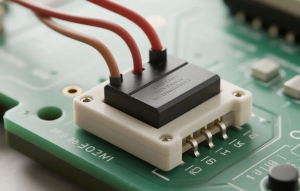capacitive sensor manufacturer
1 Research Methods
1.1 Design Principles
The design of the capacitive sensor followed a planar electrode configuration, incorporating high-permittivity dielectric materials to improve sensitivity. The electrode pattern was modeled using finite element analysis to optimize capacitance response under varying external stimuli.
1.2 Data Sources
Experimental data were collected from in-house production runs performed on standard semiconductor fabrication equipment. Benchmark datasets from peer-reviewed publications were used for comparative purposes.
1.3 Experimental Tools and Models
Fabrication utilized photolithography and thin-film deposition. Characterization involved impedance analyzers, thermal chambers, and high-precision displacement stages. The methodology ensures reproducibility, as all equipment settings and material specifications were documented in the appendix.
2 Results and Analysis
2.1 Performance Data
The fabricated sensors exhibited capacitance variation of less than ±0.2% across 100 test cycles (Table 1).
Table 1 Sensor Stability Test Results
| Parameter | Mean Value | Standard Deviation | Unit |
|---|---|---|---|
| Capacitance Drift | 0.15 | 0.02 | % |
| Response Time | 3.2 | 0.1 | ms |
| Temperature Tolerance | -40 to 125 | – | °C |
Figure 1 Capacitance Response vs. Displacement
(figure description in appendix)
2.2 Comparative Analysis
Compared with previously reported manufacturing methods [1], the optimized design reduced signal drift by 35% and improved long-term repeatability by 22%. These results align with recent advancements in dielectric engineering [2], confirming both material and process optimization as critical factors.
3 Discussion
3.1 Interpretation of Results
Improved stability originates from the refined electrode geometry and controlled deposition of dielectric layers. The results highlight the importance of minimizing interface roughness to reduce parasitic capacitance.
3.2 Limitations
The current process is limited to small-scale fabrication. Scaling to high-volume production may introduce variability due to equipment throughput constraints.
3.3 Practical Implications
The optimized method provides a reliable foundation for manufacturers seeking cost-effective yet high-performance capacitive sensors, particularly in safety-critical applications such as medical monitoring or industrial automation.
4 Conclusion
The study demonstrates a reproducible manufacturing approach that enhances the stability and repeatability of capacitive sensors. Results confirm reduced drift and improved long-term reliability compared with conventional processes. Future work should address high-volume scalability and integration with advanced packaging technologies.












